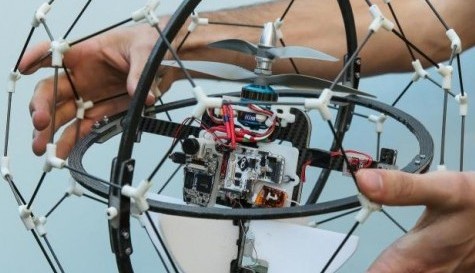Collision Avoidance - Why Bother?
on

With a brief to design an airborne vehicle able to explore chaotic and hazardous environments, PhD student Adrien Briod at the EPFL in Switzerland, came up with the Gimball.
The traditional approach to such a problem would be to use information from ultrasonic transducers or cameras together with complex avoidance algorithms to navigate a path around obstacles. The team took a radically different approach, inspired by the humble house fly beating its head against a window pane until it happens upon an open window; they decided to build a mechanical analogy. The design they came up with is an airborne vehicle both robust and light enough to withstand head-on impacts.
A gimbal coupling allows its inner platform, containing the control electronics and twin axial contra-rotating propellers, to maintain attitude whilst an outer carbon fiber framework can spin on both axes as it collides with obstacles.
Using information from only two sensors (measuring altitude and compass bearing), the prototype was able to maintain heading and altitude, despite multiple collisions, whilst flying through a dense pine forest.


Discussion (0 comments)